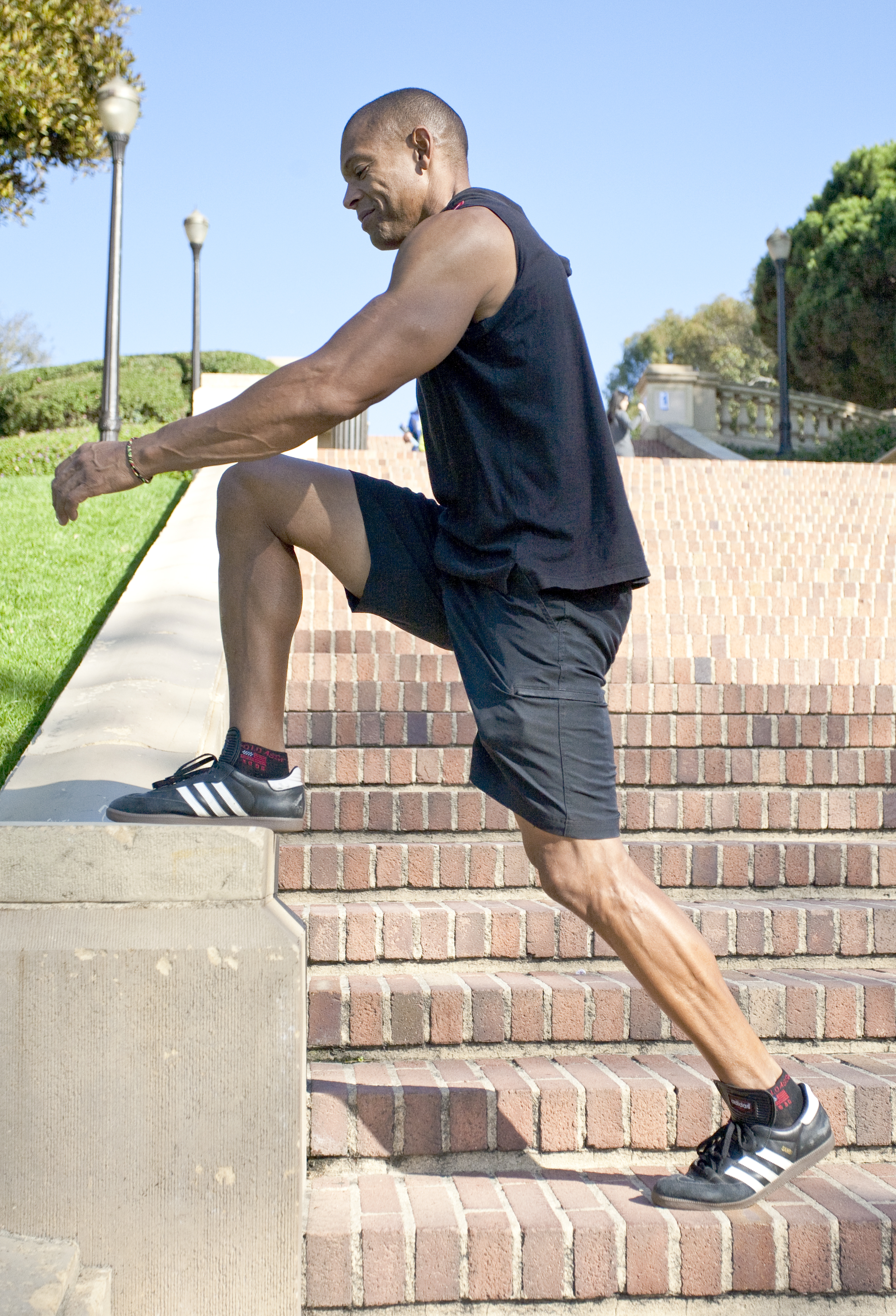Taking steps to improving health, well-being with exercise on a consistent basis

Read more from Science and Health: Obesity and Hypertension
By Golmah Zarinkhou
Oct. 26, 2011 12:25 a.m.




On a flat section of grass beside Janss Steps, a couple lounged on a blanket and a few students curled up with books.
Lindsay Pollock was the only one moving as she demonstrated how to do a push-up correctly on a quiet Saturday afternoon.
Doing certain exercises for a short time each day can make a significant difference on one’s health, said Pollock, a fourth-year sociology student and personal trainer.
These exercises can also be fit into a busy, academically-oriented schedule.
Time-conscious college students should try shorter, high-intensity workouts for 15 to 30 minutes a day, said David Frederic, a personal trainer with UCLA Recreation’s FITWELL program.
He added that exercise will increase focus and keep students on a schedule.
People should focus on compound movements, which do not isolate specific muscle groups but work on as many as possible at one time, Pollock said.
Frederic said he recommends performing Tabada intervals.
In this form of exercise a person first selects any mode of exercise and completes as many repetitions as possible in 20 seconds. The person then rests for 10 seconds, and repeats the cycle eight times before moving to a different exercise.
The pattern can continue for 15 to 30 minutes.
Tabada intervals ensure students finish daily workouts in a set amount of time and chart one’s progress, Frederic said.
Mornings are an optimal time for working out because the exercise elevates one’s mood and energy for the day and helps with maintaining consistency, Frederic said.
Performance should be the principal motivator for exercising, not aesthetics, Pollock said.
Numerous studies show exercise can reduce symptoms of depression, anxiety and negative thoughts, said Christian Roberts, assistant professor of research at the UCLA School of Nursing.
“The greatest benefits are seen in the people who go from doing nothing to something,” Roberts said.
Common exercise myths
Myth: Crunches burn fat off your stomach.
Crunches serve a completely different purpose: strengthening the muscles in your stomach. They do so without affecting the fat on top. “You can have an eight-pack but if it’s hidden beneath a beer belly, you won’t see it,” Pollock said. She added that 80 percent of body composition comes from making the right choices in terms of food.
Myth: Stretching is often as important as exercising.
Static stretching does not improve flexibility, Frederic said. After a workout, it lowers body temperature and lengthens tight-feeling muscles back to normal. But it is more important to warm up before a workout, he said.
After all, muscles are like rubber bands, Pollock said. They snap if pulled unless made pliable first. Use dynamic stretching to raise your body temperature in order to increase the elasticity of muscle fibers before exercise. Add movement to stretches by swinging one leg forward and back instead of simply reaching for your toes.
Myth: Women who lift weights easily become bulky.
Absolutely not, Pollock said.
“Even men have a hard time getting bulky,” Pollock said. “The weight room is filled with men, and I would say only 25 percent are capable of gaining mass the way they want.”
She said bulky female bodybuilders take hormones because women lack the genetic makeup necessary to gain a large amount of mass. At age 26, women begin losing bone density and muscle mass. Lifting weights strengthens muscle and prevents the need for hip and knee replacements later in life.
To prevent personal injury, start by using your body weight for lifting. Do push-ups, pull-ups, lunges and squats before using gym weights.
Myth: Walking is vigorous exercise.
College students may believe the daily huffing and puffing required to reach class counts as substantial exercise, Frederic said. But if the body is accustomed to a certain amount of work, it shows no results.


